Northern Vietnam
Hanoi Captital
Mai Chau
One of the most important historical sites in Ninh Binh and the whole country is the Hoa Lu Ancient Capital. Today, it is a popular tourist destination where visitors can admire the majestic ancient architecture and learn more about the glorious history of Vietnam.
Hoa Lu Ancient Capital, one of the four major regions of the Trang An Scenic Landscape Complex, covers up to 300 hectares. The ancient capital complex comprises several architectural masterpieces of outstanding historical and cultural worth, including:
A 3-square-kilometer special protection area encompasses the entire Hoa Lu citadel, including relics of the king temples such as King Dinh Tien Hoang Temple, King Le Dai Hanh Temple, King Dinh Tomb, and King Le Tomb. It also includes a portion of the Trang An Landscape Complex, sections of the citadel wall, and an underground palace foundation.
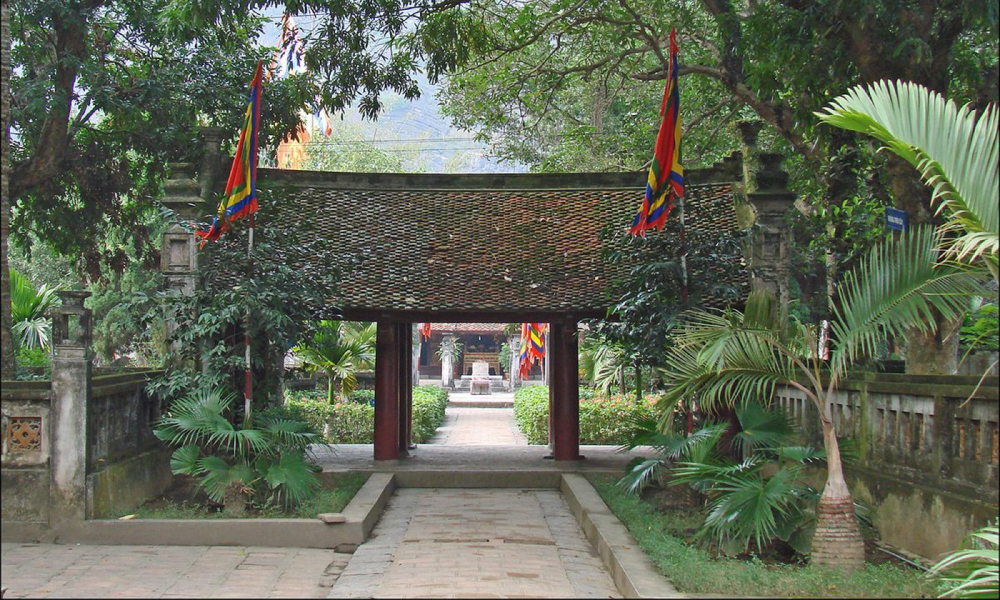
The second is the outer buffer zone, which includes both banks of the Sao Khe River as well as residential districts. There are also some well-known caverns and temples here, namely Am Tien Cave, Quan Cave, and the Ba Ngo Pagoda.
Finally, the Hoa Lu Ancient Capital Complex also includes relics outside the above two locations but plays an essential part in the old dynasty, such as the Ban Long Pagoda, Bai Dinh Pagoda, East Gate, South Gate, and more.
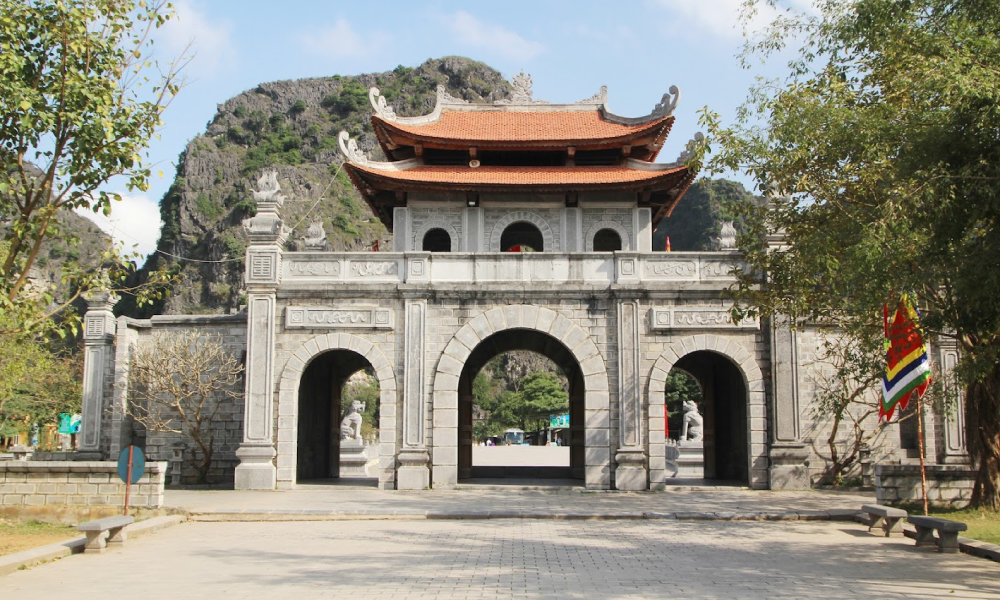
In 2014, UNESCO certified the Hoa Lu Ancient Capital as Southeast Asia’s first and only dual cultural heritage site. The historic capital is now one of Ninh Binh’s most renowned tourist attractions.
According to documents from Ninh Binh’s Department of Tourism, Hoa Lu was the first capital of the Dai Co Viet (an ancient Vietnam nation), lasting 42 years and giving rise to three dynasties: Dinh, Tien Le, and the Ly dynasty.
This location was involved with several significant uprisings and victories over invaders in Vietnamese history, and it served as the political, cultural, and military cornerstone of ancient Vietnamese nations. The preservation of architectural remains, fortifications, caverns, and artifacts holds significant historical, cultural, and scientific importance.
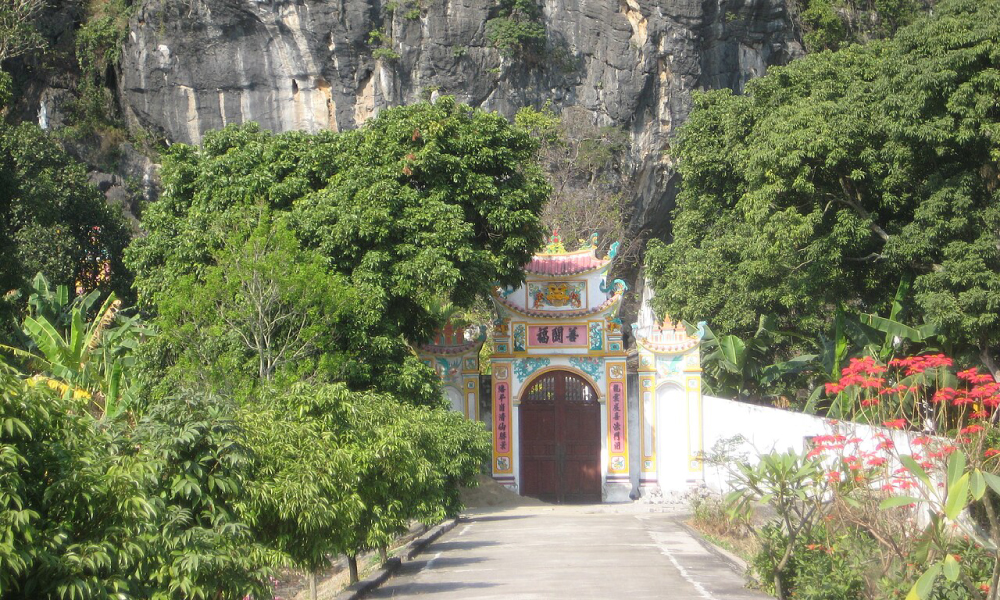
Nowadays, the old capital of Hoa Lu has become a popular tourist site for both domestic and international visitors, particularly those interested in history.
The ancient capital of Hoa Lu is located between Gia Vien District and Hoa Lu District, Ninh Binh City. Since it’s not too far away, only 120 kilometers from Hanoi, visitors have many transport options, depending on time and preference:
When booking Ninh Binh tours with Fola Travel, guests from Hanoi will not have to worry about transportation since we provide pick-up/drop-off service from the city center. Travelers have the option of using buses, limousines, or private automobiles, all of which include comfortable seating, professional drivers, air conditioning, and free drinking water.
You can visit Hoa Lu Ancient Capital at any time of the year, because each season here has its own attractive beauty.
If you enjoy the rush and vibrant atmosphere, explore Ninh Binh in the spring. At this time, Hoa Lu Ancient Capital will host a number of unique traditional festivals to commemorate the country’s founding kings, which will allow you to immerse yourself in local activities and learn about Ninh Binh’s traditional customs.

However, if you dislike crowds and noise, the summer and autumn are better times to visit Ninh Binh and explore Hoa Lu Ancient Capital. The historic capital is now covered with a glittering yellow sheen of the sun, and the aroma of ripe rice pervades the air, adding to the city’s tranquil and peaceful appeal.
Hoa Lu Ancient Capital consists of various separate architectural areas, so visitors will have many locations to explore and activities to partake in when they come here:
From the East Gate, a well-known check-in point in Ninh Binh, tourists travel deep inside to reach King Dinh Tien Hoang Temple, which is nestled against Ma Yen Mountain and houses King Dinh’s spectacular tomb.
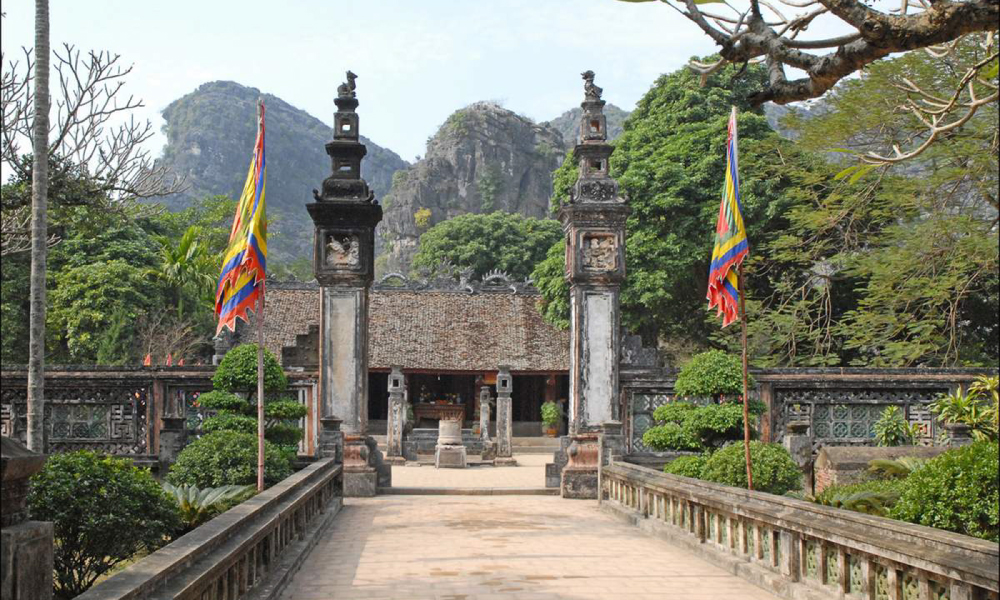
King Dinh Tien Hoang Temple, built in the 17th century, is a complex with many majestic architectural works, including Ngo Mon Quan, artificial waterfalls, lotus ponds, flower gardens, as well as many precious antiques, sophistically carved entirely from monolithic green stone.
The smaller-scale King Le Dai Hanh Temple is located 500 meters from King Dinh Temple. The temple was constructed with three buildings: Bai Duong, Thien Huong, and the main space for worshiping King Le Dai Hanh, his son, and the queen.
The surroundings of King Le Dai Hanh’s temple are serene and modest, with numerous rustling green trees embracing the intricately carved antique relics.
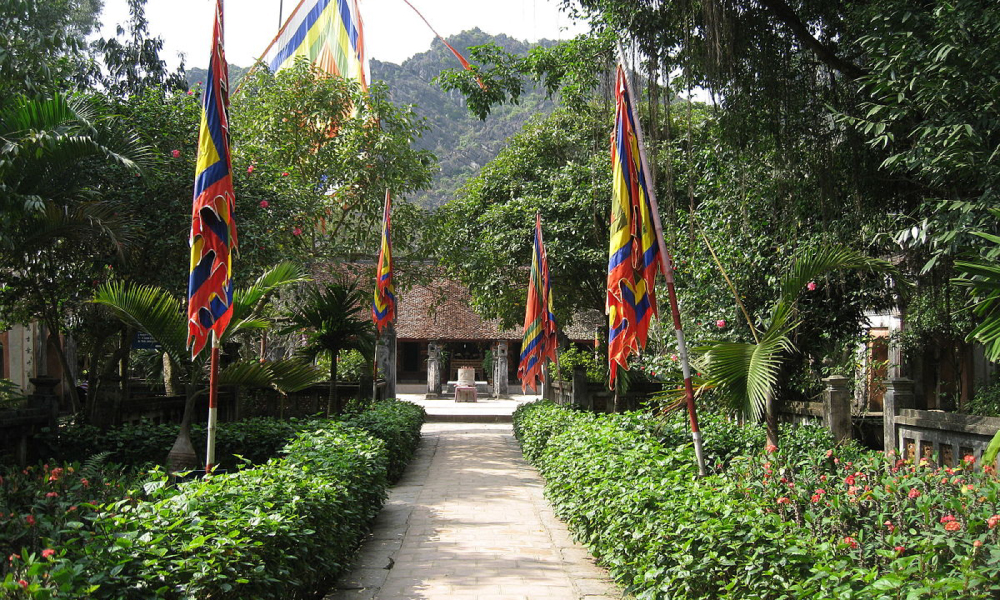
The temple dedicated to Princess Phat Kim, King Dinh Tien Hoang’s daughter, is located near King Le Dai Hanh Temple and the Nhat Tru Pagoda.
The temple was created by the people of Ninh Binh to honor the lovely woman who braved several difficulties and battles in the 10th century.
The three feudal dynasties in the old capital of Hoa Lu were all highly interested in Buddhism and regarded it to be the national religion. As a result, Ninh Binh possesses several ancient pagodas, including the Bai Dinh Pagoda, which is located near the West Gate of the relic site.
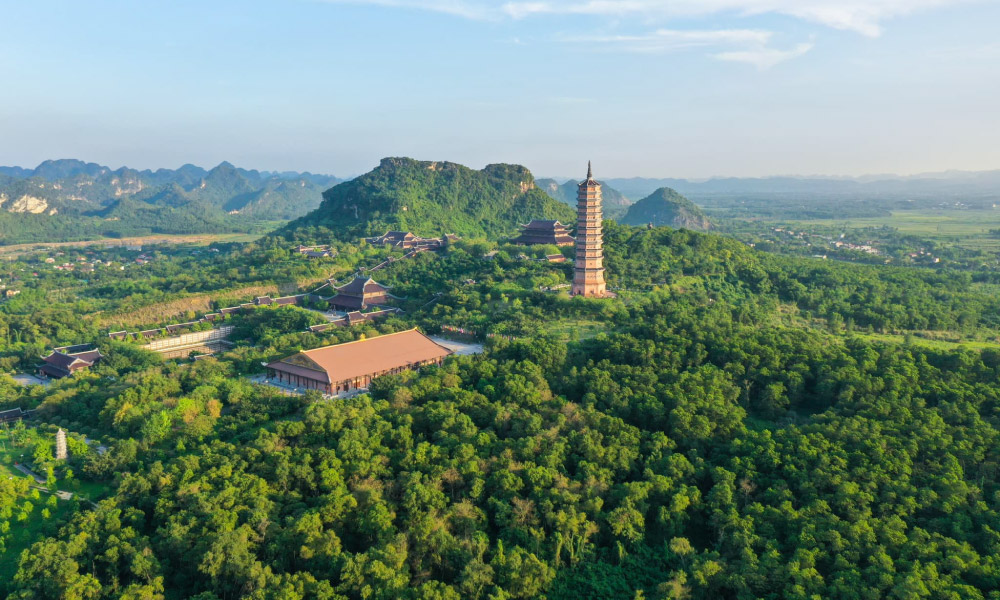
Today, Bai Dinh Pagoda consists of the antique pagoda and a newly-built pagoda area. This is Vietnam’s largest pagoda complex and a popular spiritual tourism attraction in Ninh Binh Province.
The Am Tien Pagoda and Cave has lately gained popularity among tourists due to its poetic and mysterious surroundings. The most unique aspect of Am Tien Cave is the clear, blue, and strangely quiet lake, surrounded by high mountains and green forests, creating the perfect backdrop for beautiful photos!

The Nhat Tru Pagoda, built in 995, is a relic with a rich historical and architectural heritage.
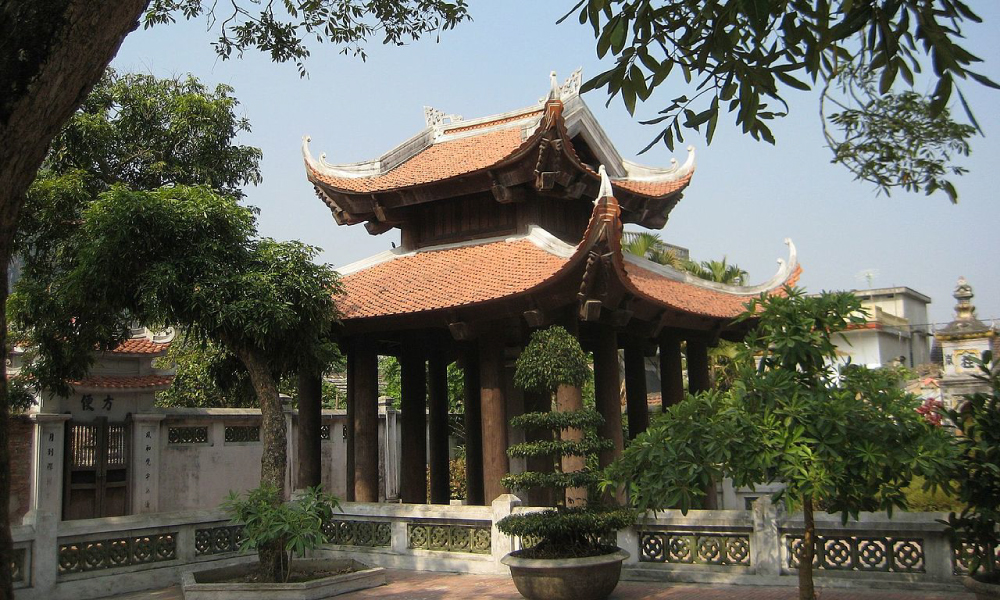
After more than 1000 years of history, only the Buddhist Sutra Pillar remains in the entire pagoda and has been designated a National Treasure – a precious document not just of Buddhism but also of Vietnamese history.
Trang An scenic area is located right next to the ancient capital of Hoa Lu. This location is well-known for its breathtaking natural beauty, with the river winding around the spectacular high mountains.

Boating along the Tam Coc River is one of the most famous sightseeing activities on Ninh Binh tours. The peaceful, poetic beauty of this place will help visitors relax and unwind.
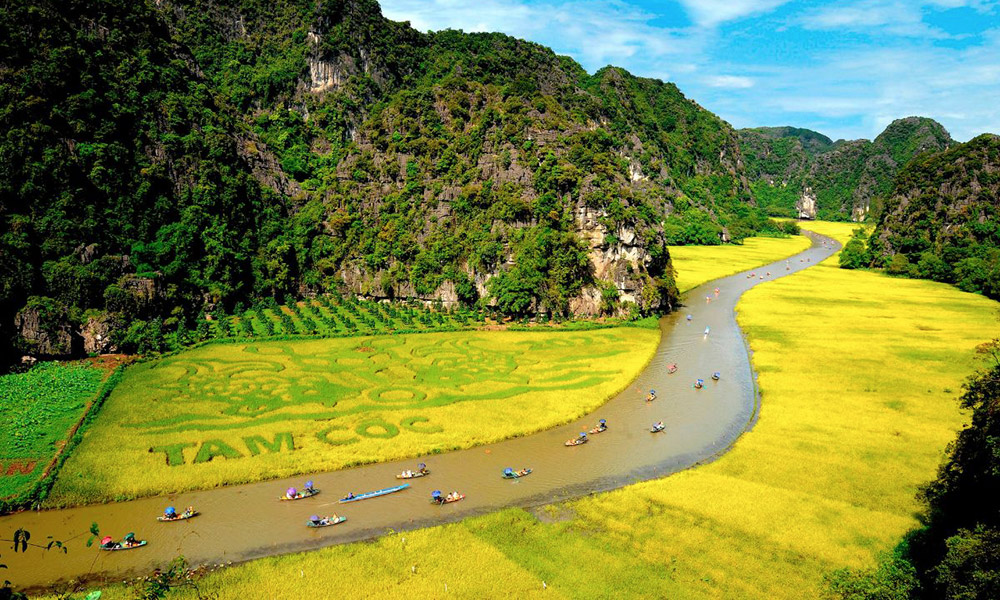
The magnificent Mua Caves mountain and cave are ideal for hiking enthusiasts. From the summit of Hang Mua, you may enjoy a stunning panoramic view of Tam Coc and the entire Ninh Binh city.
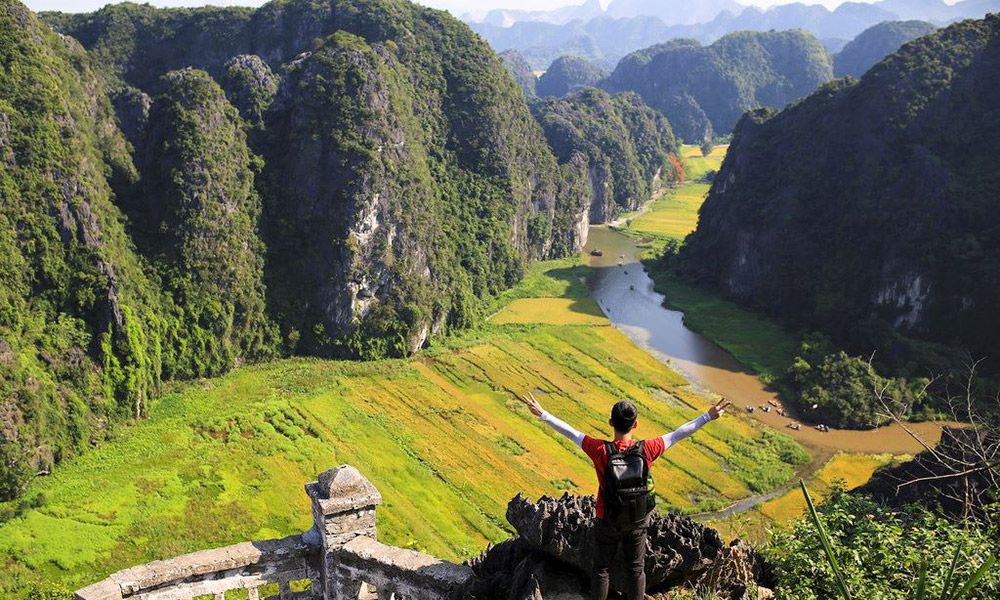
The entrance fee at Hoa Lu Ancient Capital is quite low, less than $1 per person. When booking Ninh Binh tours with Fola Travel, admission tickets are included in the tour fee, allowing guests to have a captivating vacation without worrying about anything!
Ninh Binh has various unique and special traditional festivals celebrated at spiritual locations inside the Hoa Lu Ancient Capital Relic. The biggest and most famous festival is arguably the Hoa Lu Festival, which takes place every third lunar month.
This festival is held in the central square of the Hoa Lu Ancient Capital Complex to show patriotism, the identity of “When drinking water, remember its source,” and to teach the younger generation to be grateful to national heroes such as King Dinh Tien Hoang and King Le Dai Hanh for their contributions to the country’s defense.
Other traditional festivities in the area include the worship of Duc Thanh Minh Dai Vuong and the Bai Dinh Pagoda Festival. Participating in traditional festivals is an excellent opportunity to learn about local history and culture!
SHARE YOUR OPINION